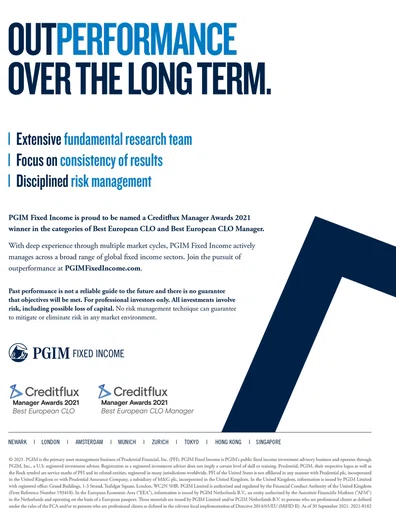

November 2021 | Issue 240
News
It’s a-live! AI platform launch puts US ratings in spotlight
It’s a-live! AI platform launch puts US ratings in spotlight

Dan Alderson
Deputy editor
RoboR8, a fintech platform that aims to democratise credit ratings through artificial intelligence, has launched and hopes to rate 50,000 companies by the end of December, before building to several million in 2022.
The mission statement of RoboR8 (pronounced robo-rate) is to make credit scoring transparent and accessible to SMEs, investors, lenders and managers, both professional and non-professional.
Based in Singapore, the company is led by Simon Christofides, who formerly headed credit index trading at Goldman Sachs in London and co-founded Chorus Capital, a European alternative credit manager specialising in bank risk-sharing transactions.
RoboR8’s initial focus is on North American companies, but it plans to expand this globally over time. The launch contained around 10,000 companies and over half-a-million ratings, with 10,000 European companies due to come online in November.
“Having an initial launch with North America allows users to have a large comparison set from the existing agencies,” says Christofides. “RoboR8’s output is analogous to the larger agencies, so comparison and identification of inconsistencies is direct.”

“Our distributional rating is analogous to a risk-based approach”
Simon Christofides | RoboR8
Beginning as a free service, RoboR8 aims to provide continuous monitoring of company ratings in a centralised database. Its credit scoring system uses a proprietary machine learning algorithm called Migo. This combines a classification tree approach, which Christofides says can be proven mathematically to be optimal.
“We are not a rating agency; we are a technology company,” he says. “We don’t give any subjective opinion or view on the credit-worthiness of a company. RoboR8 presents an objective output from the system, based on the macro data and the financial statement, without interference. This RoboR8 score should be the foundation of any rating given to a company.”
Ratings update continuously with these given as a probability distribution of scores rather than a single rating. According to Christofides, companies with the same credit rating can have vastly different credit risks.
“We give a distribution of ratings, which can indicate how likely a rating transition is,” he says. “The majority of our initial users have come from the CLO space or are professional credit investors. They have given very positive feedback as a distributional rating is analogous to the risk-based approach they are used to.”
Share this article:

Global credit funds & CLO's
November 2021 | Issue 240
Published in London & New York.
Copyright Creditflux. All rights reserved. Check our Privacy Policy and our Terms of Use.

















